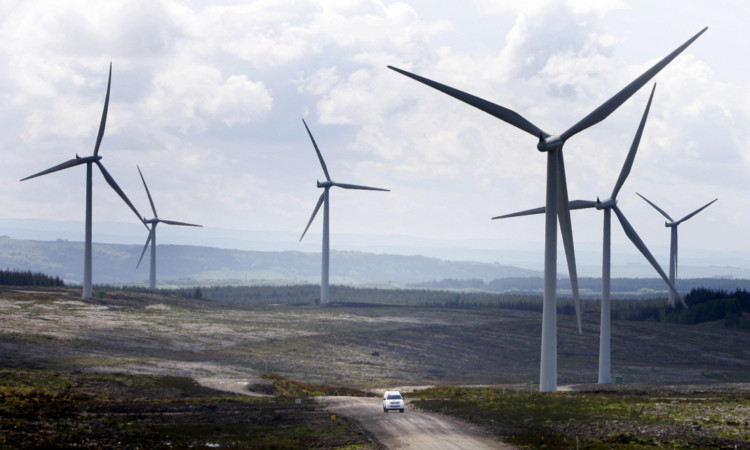Hopes of generating all of Scotland’s electricity and creating 40,000 jobs with renewable energy by 2020 have been stalled by the economic crisis, private sector caution, changes in UK energy policy and EU regulations, the public spending watchdog has found.
The Scottish Government’s 2020 target and its “optimistic” employment projections are “challenging”, according to a report by Audit Scotland.
“Scotland’s strategy for renewable energy is a good example of clear leadership and direction supported by integration across other policy areas,” Auditor General for Scotland Caroline Gardner said.
“While there are aspects the Scottish Government and other public bodies should improve, the main challenge is that private sector investment has been slower than expected, reflecting the state of the economy and the uncertainty of developments in the wider UK energy sector.”
Renewable power “needs to double” to meet the targets, the report states.
Offshore developments have the greatest potential as they are more efficient than onshore centres, but they are experimental and require “billions of pounds” of private investment which is thin on the ground, it said.
Uncertainty over UK energy policy, costs and reliability of renewable technology and access to the grid are deterring large-scale investors and delaying investment decisions.
“Although manufacturing, engineering and utilities companies have made commitments to locate and invest in Scotland, the majority of actual investment will be after 2015,” the report states.
“Industry is waiting for clarity on issues such as UK energy policy, access to the national grid, and technology costs and reliability before it invests.”
Public funding is “comparatively small” but it is intended to attract “billions of pounds of private sector investment”, the report says.
The National Renewables Infrastructure Plan (NRIP), designed to prime 11 ports and harbours for offshore wind, is estimated to need £253 million by 2013-14.
The £11.4 million of public cash spent so far has attracted £15.4 million in private funding, amounting to just over a tenth of the projected cost for NRIP.
The £101 million Renewable Energy Investment Fund was expected to spend £16 million in 2012-13 but spent just £1.6 million because “few projects were in a position to spend any money”.
The report states: “The scale and rate of investment by the public and private sectors has been lower and slower than expected, owing to uncertainty over where and when the offshore wind industry intends to invest.
“The Scottish Government has made steady progress towards its renewable energy targets for 2020. However, achieving these targets will be challenging and depends on significant activity and investment by the public and private sector.
“We estimate that to meet the renewable electricity target alone, average annual increases in installed capacity need to double.
“The Scottish Government estimates that renewable energy could deliver up to £30 billion investment and 40,000 jobs by 2020.
“Even if all of the 293 renewable electricity projects under construction or with planning permission at March 2013 go ahead, meeting the 2020 target will require at least a further 3,733MW of installed capacity.
It adds: “At March 2013 there were a further 369 proposed projects, with a total installed capacity of 8,639MW. However, it is unlikely that all of these projects will proceed, as they may fail to secure planning permission or finance.”
The report outlines the potential of offshore wind to “rapidly accelerate” renewable power, with the smallest proposed offshore wind project able to generate as much power as the largest onshore development.
But it adds: “Successfully developing, testing and building offshore wind projects to be operational by 2020 will be challenging. It is a new industry that requires billions of pounds of investment from the private sector. The current financial climate, and other factors are delaying investment decisions.”
A Skills Development Scotland investment plan estimates there could be up to 40,000 renewables jobs by 2020, describing this as “the most optimistic scenario”.
The report states: “The least optimistic scenarios suggest that potential employment opportunities could be a third of this (13,000).”
EU regulations which required the Scottish Government to change community renewables grants to loans, with 10% annual interest, stalled investment as applicants delayed their loans to avoid paying interest.
